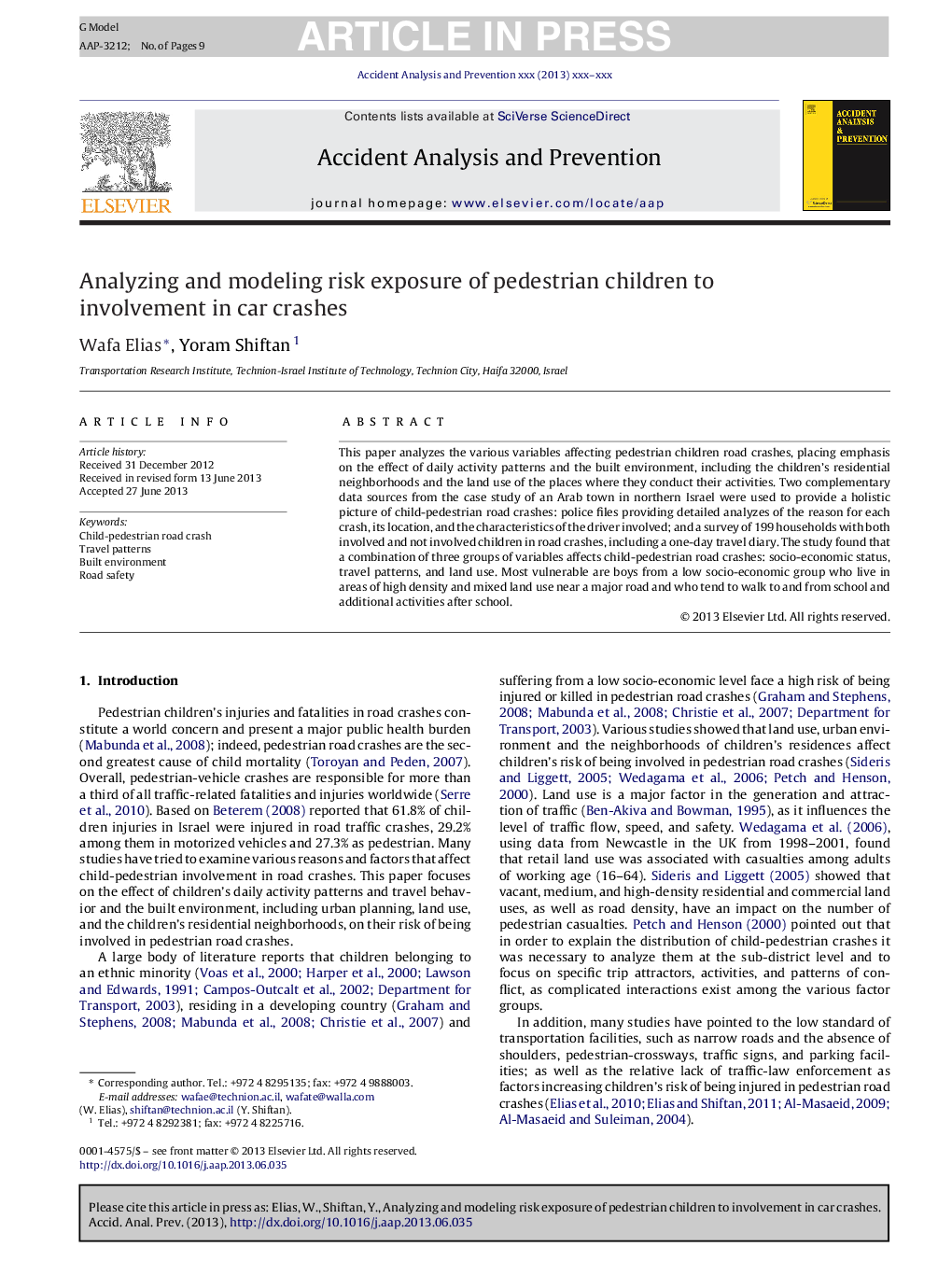| Article ID | Journal | Published Year | Pages | File Type |
|---|---|---|---|---|
| 6966083 | Accident Analysis & Prevention | 2014 | 9 Pages |
Abstract
This paper analyzes the various variables affecting pedestrian children road crashes, placing emphasis on the effect of daily activity patterns and the built environment, including the children's residential neighborhoods and the land use of the places where they conduct their activities. Two complementary data sources from the case study of an Arab town in northern Israel were used to provide a holistic picture of child-pedestrian road crashes: police files providing detailed analyzes of the reason for each crash, its location, and the characteristics of the driver involved; and a survey of 199 households with both involved and not involved children in road crashes, including a one-day travel diary. The study found that a combination of three groups of variables affects child-pedestrian road crashes: socio-economic status, travel patterns, and land use. Most vulnerable are boys from a low socio-economic group who live in areas of high density and mixed land use near a major road and who tend to walk to and from school and additional activities after school.
Related Topics
Physical Sciences and Engineering
Chemical Engineering
Chemical Health and Safety
Authors
Wafa Elias, Yoram Shiftan,
